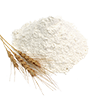Sign In Chef

By using our free meal planner (and the rest of spoonacular.com) you have to agree that you and only you are responsible for anything that happens to you because of something you have read on this site or have bought/cooked/eaten because of this site. After all, the only person who controls what you put in your mouth is you, right?
Spoonacular is a recipe search engine that sources recipes from across the web. We do our best to find recipes suitable for many diets — whether vegetarian, vegan, gluten free, dairy free, etc. — but we cannot guarantee that a recipe's ingredients are safe for your diet. Always read ingredient lists from the original source (follow the link from the "Instructions" field) in case an ingredient has been incorrectly extracted from the original source or has been labeled incorrectly in any way. Moreover, it is important that you always read the labels on every product you buy to see if the product could cause an allergic reaction or if it conflicts with your personal or religious beliefs. If you are still not sure after reading the label, contact the manufacturer.
We also attempt to estimate the cost and calculate the nutritional information for the recipes found on our site. Again, we cannot guarantee the accuracy of this information. Additionally, our nutrition visualizer that suggests that you limit sodium, sugar, etc., and get enough protein, vitamins, and minerals is not intended as medical advice. Similarly, our health tips are based on articles we have read from various sources across the web, and are not based on any medical training. The team behind spoonacular does not possess any medical qualifications and the information may be found to be incorrect or out of date based on future research. If you need help planning your diet or determining which foods (and recipes) are safe for you, contact a registered dietitian, allergist, or another medical professional.
Spoonacular is not responsible for any adverse effects or damages that occur because of your use of the website or any information it provides (e.g. after cooking/consuming a recipe on spoonacular.com or on any of the sites we link to, after reading information from articles or shared via social media, etc.)
×$1.40 per serving

1 likes

Ready in 45 minutes

Spoonacular Score: 47%
You can never have too many dessert recipes, so give A Classic Strawberry Shortcake a try. This recipe serves 4 and costs $1.4 per serving. One serving contains 514 calories, 7g of protein, and 24g of fat. Mother's Day will be even more special with this recipe. This recipe is liked by 1 foodies and cooks. It is brought to you by Foodista. A mixture of all purpose flour, vanillan extract, margarine, and a handful of other ingredients are all it takes to make this recipe so tasty. From preparation to the plate, this recipe takes approximately 45 minutes. Taking all factors into account, this recipe earns a spoonacular score of 42%, which is pretty good. Similar recipes include Classic Strawberry Shortcake, Classic Strawberry Shortcake, and Classic Strawberry Shortcake.
Strawberry Shortcake can be paired with Port. A common wine pairing rule is to make sure your wine is sweeter than your food. Delicate desserts go well with Moscato d'Asti, nutty desserts with cream sherry, and caramel or chocolate desserts pair well with port. One wine you could try is Krohn Lágrima Fine Port. It has 5 out of 5 stars and a bottle costs about 20 dollars.
 Toffee, caramel and good maturity on this sophisticated wine. There is a spirit edge, but it works because the fruit is subservient to the maturity, ripeness and richness. The aftertaste is just perfumed.
Toffee, caramel and good maturity on this sophisticated wine. There is a spirit edge, but it works because the fruit is subservient to the maturity, ripeness and richness. The aftertaste is just perfumed.
» Get this wine on Amazon.com




























Read the detailed instructions on Foodista.com – The Cooking Encyclopedia Everyone Can Edit